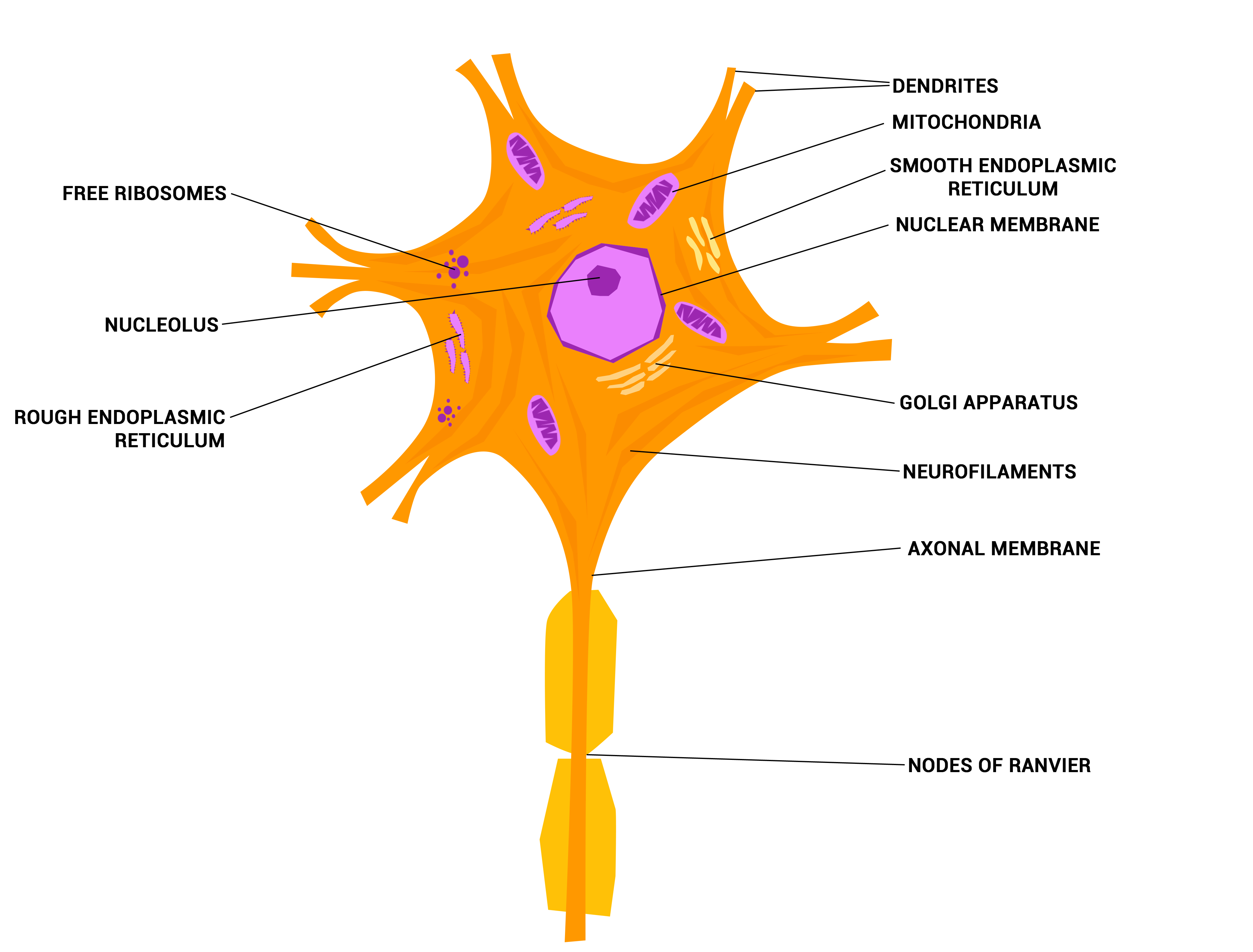Neurons are highly specialized cells that respond to stimuli and transmit electrical and chemical signals to parts of the body. Their structure makes their function tremendously efficient. Take a look at the image below:
Notice the branched out processes (projections). These processes, known as dendrites, receive electrical signals and transmit these signals down to the soma (cell body) and then the axon. Remember, electrical signals always travel from the dendrite end to the axon end.
The soma contains organelles common to any other cell: the DNA-containing nucleus, cytoplasm, mitochondria, ribosomes, the endoplasmic reticulum, the Golgi Apparatus - just to name a few.
Once the electrical signal is carried across the soma, it travels along the axon, a long fiber-like extension that transmits these impulses away from the cell body to other cells. The axon is covered in the myelin sheath, a special insulating envelope that increases the speed of signal transmission. However, it is not completely covered. There are gaps in the myelin sheath, called the Nodes of Ranvier, that boost the signal by means of saltatory conduction as the signals "jump" across the uninsulated axon.
Once the signal reaches the axon terminal (the end of the axon), it must be converted to a chemical signal in order to jump across the synapse (a gap between two neurons). It does so by releasing neurotransmitters that diffuse across the synaptic cleft and bind to the receptors of the postsynaptic neuron (the neuron receiving the signal).
________
Image Credit:
(1) “Neuron Structure.” Wikimedia Commons, 5 Feb. 2016, upload.wikimedia.org/wikipedia/commons/a/a7/Neuron_or_Nerve_cell_-_Labelled_Image.png.

Comments
Post a Comment